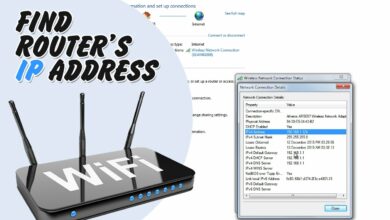Latest Windows 10 Update Problems And How To Fix Them
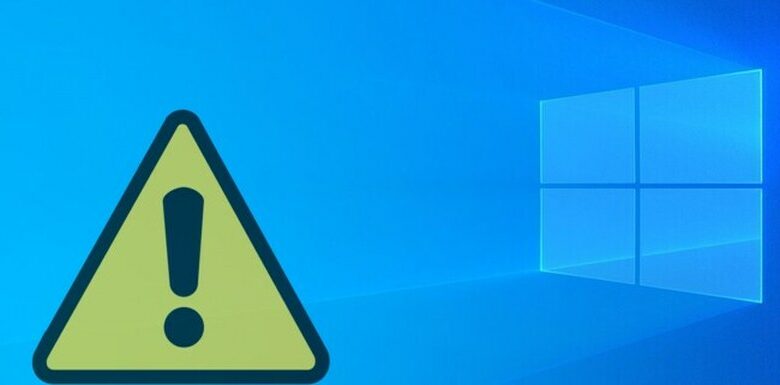
Latest Windows 10 Update Problems will be described in this article. Windows 10 and Windows 11 have had their share of problems. The operating system had over 1200 security vulnerabilities just in 2022. Microsoft quickly moves in to fix many of these protection holes in the system, so it’s essential to stay up to date. Yet, Windows updates can bring their own problems. This guide shows what to do when an update does more harm than good.
Latest Windows 10 Update Problems And How To Fix Them
In this article, you can know about Windows 10 Update Problems here are the details below;
Note: if a problem here is marked as “FIXED,” it means Microsoft has rolled out an update that fixes the problem, and the solution is simply to make sure your system is fully updated. If a problem is not yet “FIXED,” then either read that entry for workarounds to that specific problem or scroll down the page for advice on how to roll back updates.
[Not Fixed] August 22, 2023, Windows 11, KB5029351 Cumulative Update
![[Not Fixed] August 22, 2023, Windows 11, KB5029351 Cumulative Update](https://www.techblitz.ai/wp-content/uploads/2023/09/Not-Fixed-August-22-2023-Windows-11-KB5029351-Cumulative-Update-300x158.jpg)
Problems: “Unsupported processor” update errors leading to BSOD crash.
Microsoft’s cumulative update for August 2023, KB5029351, is a minor one that adds some simple, yet needed features, such as a hover action near the Search box and the ability to use your keyboard’s Tab key for searching. This update also fixes some problems that affect how the Group Policy Service, optional updates, and virtual print queue print jobs work.
However, in a surprise discovery, the KB5029351 update can cause an UNSUPPORTED_PROCESSOR blue screen of death (BSOD) error in certain MSI motherboards.
- Use the Run command, Win + R, and type msinfo32 to learn which motherboard you use.
- Look at the item “Baseboard Manufacturer.” If it’s non-MSI, you’re good to go with this update. Otherwise, you should pause/defer this update until Microsoft releases a patch.
- If you run into an annoying BSOD crash during a restart, use a method covered here to resolve the issue.
Tip: learn how to repair the .NET Framework in Windows.
[Not Fixed] August 8, 2023, Window 11, .NET Framework 3.5 and 4.8.1, KB5029351
![[Not Fixed] August 8, 2023, Window 11, .NET Framework 3.5 and 4.8.1, KB5029351](https://www.techblitz.ai/wp-content/uploads/2023/09/Not-Fixed-August-8-2023-Window-11-.NET-Framework-3.5-and-4.8.1-KB5029351-300x169.jpg)
Problems: update fails to install error | browser issues
Microsoft’s KB5028948 update was brought in to address the slow SSD problem seen in recent months on many Windows 11 devices, along with a security patch to fix spoofing attempts resembling ClickOnce deployments. Most Windows .NET updates quietly happen in the background, and it’s rare to encounter any issues – that’s why we don’t cover them. However, this time it’s different.
The update is broken and may fail to install at the outset. Moreover, it has a dependence on Internet Information Services (IIS), which is causing some users to not be able to use their default browsers to access the Internet.
Failures can occur for various reasons, including issues with the registry, Windows filesystem errors, and Windows update service problems. Identify them from the error codes, such as 0x80070002 and 0x80248007.
Going for a cloud-based device reset (while keeping your files) is the best way to deal with any installation error, but it consumes a lot of time. If you’re going to install an update where there could be system freezes and a stuck installation, it’s a good idea to run the Windows 11 Update Troubleshooter first.
Launch the Update Troubleshooter from “System -> Troubleshoot -> Other troubleshooters.”
Windows Update troubleshooter in Settings.
Once the troubleshooter runs, it will check for and fix any issues that were preventing installation. Those problems are mostly down to the security settings, missing or corrupt files, and problems with Service Registration. Other issues could be connected to Windows Network Diagnostics, IsPostback_RC_PendingUpdates, WaaSMedicService, and BITS service.
Troubleshooting report for Windows Update troubleshooter.
[Fixed] July 26, 2023, Windows 11, Version 22H2, KB5028254 Cumulative Update
Problems: Start menu problems
Microsoft released a quick July-end cumulative update for Windows 11 with KB5028254 to fix VPN performance issues and bring quality improvements into what is known as a Servicing Stack Update (SSU). The improvements were designed to make the installation easier in the future. It addresses over 27 bugs in total.
Windows 11 downloading the July 26 update, KB5028254.
There shouldn’t be many difficulties with KB4028254, but some users have reported that it breaks their Start menu, causing it to freeze down and not open when prompted. It’s very easy to fix the Start menu problems on a Windows device, and we recommend the simple method of reinstalling the Start menu.
[Fixed] July 11, 2023, Windows 11, Version 22H2, KB5028185
Problems: boot loop issues | flickering displays
Microsoft’s June 27, 2023, update, KB5027303, fixed over 78 past vulnerabilities and introduced in-app support for Voice Access, which is a big deal, as Microsoft wants to turn Windows 11 into a fully voice-compatible OS.
The July cumulative update also comes with KB5028851, a minor hassle-free update on the .NET Framework 3.5 and 4.8.1.
Installing KB5028185 update in Windows 11.
The KB5028185 update should go smoothly, but some users have reported system crashes, including BSOD errors. The worst is the boot loop problem, where you’re stuck in endless restart attempts. It can be fixed through a clean install and other methods, assuming you can’t access the desktop. We have covered solutions for failure to install errors in the above section.
There was also a critical process failure reported as 0x8007045b, which indicates system file corruption. To deal with critical errors like these, running a Deployment Image Servicing scan (DISM) is just one solution.
Good to know: check out our list of the best Terminal emulators for Windows.
[Fixed] June 27, 2023, Windows 11, Version 22H2 KB5027303
Problems: installation errors | slow boot times | blue screen problems
At the end of June, Microsoft quietly introduced a minor cumulative update, KB5027303, which was really to test its features for the more advanced update, KB5028185, covered in detail above.
If you’re using a VPN, you will now have a recognizable VPN profile icon displayed over the network connection (there was no way to tell in the past.)
Installing KB5027303 update in Windows 11.
This update does come with a few installation errors, a Blue Screen, and slowdown issues, but most of them have been taken care of in higher updates.
Error Code 0x800f0831
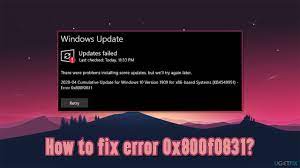
Problem: update fails to install
This is one of the better common errors that may arise when you try to update Windows.
Essentially, the above error code means your update has failed, but there are several things you can do to troubleshoot this problem:
- If there’s a conflict with your VPN or proxy server, make sure it’s completely disabled when trying to revamp Windows. You may even require to uninstall & reinstall the software.
- Scan for corrupt system files.
- For this & other update errors, you can try finding the update in question in the Microsoft Update Catalog and install it manually.
[Not Fixed] August 22, 2023, Windows 10 Version 22H2 KB5029331 Quality Update
![[Not Fixed] August 22, 2023, Windows 10 Version 22H2 KB5029331 Quality Update](https://www.techblitz.ai/wp-content/uploads/2023/09/Not-Fixed-August-22-2023-Windows-10-Version-22H2-KB5029331-Quality-Update-300x169.jpg)
Problems: “Unsupported processor” update errors leading to BSOD crash
As Windows 10 is slated to retire in two years, it has stopped receiving new exciting features and updates. There are some minor security and quality updates in KB5029331, such as helping Windows detect your location with greater accuracy, the introduction of notification badging on the Start menu, improving the display of your Search box, and some past issues in Windows Settings.
However, much like their Windows 11 counterparts, some Windows 10 users ran into an UNSUPPORTED_PROCESSOR BSOD error. For detailed troubleshooting, check the above Windows 11 section on KB5029351, August 22, 2023.
[Fixed] July 25, 2023, Windows 10 Version 22H2 KB5028244 Non-Security Update
Problems: updates fail to install | lengthy installation
KB5028244 solved the issue of not receiving alerts using the Windows Notification Platform. It also addresses a problem that affects certain audio devices and displays that don’t recover from sleep.
Some users have reported that the update gets stuck during installation and that the issue is more difficult to resolve. There are many efficient ways to deal with a stuck Windows update, and if you’re seeing slow boot issues in general, there are solutions to get around that as well. Also check Xpadder alternative windows 10 Reddit
[Fixed] July 11, 2023, Windows 10 Version 22H2 KB5028166 Servicing Stack Update
The KB5028166 update is designed to address some problems with the registry settings of the Windows 10 device. KB5028166 supports a whole new range of characters for different languages, such as Standard Chinese, Dengxian, and Simsun. The biggest issue with this update is that the games and apps are lagging behind in response, and the slowdown can affect your PC’s performance as well.
Tip: if you’re hitting 100% CPU usage due to gaming or other apps, it is easy to fix the problem.
[Fixed] Error 0x80070422
![[Fixed] Error 0x80070422](https://www.techblitz.ai/wp-content/uploads/2023/09/Fixed-Error-0x80070422-1-300x200.jpg)
Problem: updates fail to install properly
The 0x80070422 bug is one of the oldest update errors in Windows, and it can still affect some Windows 10 devices while installing updates. It’s often accompanied by other types of messages, such as “Windows update is disabled.” The current approach to solving this problem is to disable IPv6 from Wi-Fi Properties. This is another Windows 10 Update Problems.
- Verify that your Windows Update service is enabled.
- If you notice persistent failure due to the error code, go to “Control Panel -> Network and Internet -> Network and Sharing Center.” Double-click the available Internet connection, which will open a Wi-Fi Status pop-up window.
- Click “Properties.”
- Navigate to “Internet Protocol Arrangement 6 (TCP/IPv6)” and disable it.
- If you’re still having issues due to the error code, enter the Command Prompt in admin mode and the following commands one after another.
- Restart your device, then check your Wi-Fi connection again. The issues due to 0x80070422 should be fixed.
How to Fix & Avoid Broken Windows Updates
If the problem you’ve encountered with a new Windows update is that the install stops at a certain percentage, or more generally, that it’s failing to install altogether, try installing the update from PowerShell. This is another Windows 10 Update Problems. Also check chromium host executable
- Open PowerShell as administrator by typing it into the Start menu search.
- In PowerShell, use this command:
- It may ask you to establish and import the NuGet provider. Press “Y” for Yes, & let it install the package.
- You may get a warning that you are installing the modules from an untrusted repository. Type “A” to allow all the changes.
- Check for the latest Windows updates by ordering the following into PowerShell:
- Once you’ve confirmed that there are updates to install, type the following command. You may further be asked if you want to perform this action, to which you must type “A” to finalize.
- Wait for the broken Windows updates to heal themselves. They will automatically execute in the PowerShell window.
Tip: how does PowerShell differ from Command Prompt? Read on to find out.
Install Optional Updates
If you access the Windows update screen by going to “Settings -> Windows Update -> Advanced Options -> Additional Options,” you will find the “Optional Updates” menu.
These updates are designed specifically to address feature, quality, and driver issues for recent Windows updates. They become “proper” updates a few weeks later once they’ve been thoroughly tested.
These updates are still pretty stable, though, and may be worth a shot if a current update has broken something in Windows. This is another Windows 10 Update Problems.
Uninstall Windows Updates
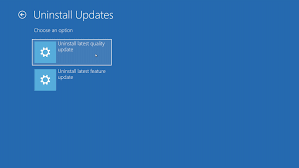
You can uninstall smaller Windows updates (to roll back builds, see the next section) by doing the following:
- In Windows 10, go to “Control Panel -> Schedules -> Programs and Features -> Installed updates.”
- Scroll down in the central pane to the “Microsoft Windows” heading, and you’ll see all of the KB and security updates for Windows 10 along with the dates they were seated on. Right-click the one you like to uninstall and reboot your PC.
- Windows 11 also has the option to uninstall recent updates. Visit “Settings -> Windows Update -> Uninstall updates,” and click the “Uninstall” button subsequent to the update you want to eliminate. In this example, we are uninstalling the 2023-07 security update for July 2023, KB5028185.
How to Roll Back Windows Builds
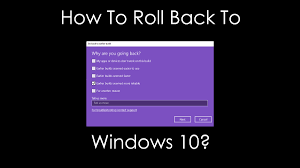
After every major update, Windows gives you a 10-day window to roll around to a previous version. It’s a useful feature & should give you enough time to evaluate whether you have a tough update. Of course, this won’t retrieve your files if Windows deletes them, but at least you’ll be on a better stable version of the OS. This is another Windows 10 Update Problems.
- Go to “Settings -> Update & security -> Recovery” in Windows 10 or “Settings -> System -> Recovery” in Windows 11.
- Below “Reset this PC,” you should see the option to “Go back” to the last version of Windows.
- Click “Get started,” then follow the actions to roll back Windows. Again, this opportunity is only available for 10 days after a Windows build update.
Check Your Windows Build
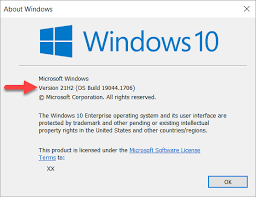
Before examining into rolling back & fixing broken Windows updates, you need to check the build of Windows you’re currently using to confirm which issues are affecting you. This is another Windows 10 Update Problems.
- Go to “Settings -> Windows Update -> Update history” (in Windows 11) or “Settings -> Update & Security -> Windows Update -> View Update history” (in Windows 10).
- In the new window, click the arrow following to “Feature Updates” to visit the version of Windows you’re presently using, & click “Quality Updates” to see all of the smaller KB updates you have installed.
- You will also find “Definition Updates,” which are security intelligence updates related to Microsoft Defender.
- At the bottom of the list, you may find “Other Updates” concerning programs such as the Windows Malicious Software Removal tool, Intelligence updates, and security patches.
Pause Windows Updates
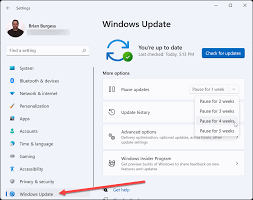
Another thing you can do to avoid getting the above update problems and more is to take over control when Windows updates. This way, you can hold off getting updates the point Microsoft rolls them out, observe the information for a bit to see if any significant errors crop up, then manually do the update yourself. This is another Windows 10 Update Problems.
- If you’re running Windows 11, go to “Settings -> Windows Update -> More options -> Pause updates,” and choose the number of weeks you wish to defer updates in the future (from the default of one week to up to five weeks).
- In Windows 10 Home, Pro, Enterprise, Education, or S, you can postpone updates by checking the same option available under “Settings -> Update & Security -> Windows Update.” On some Windows 10 versions, it may be referred to as “Defer” instead of “Pause” and available under a different heading.
Tip: did you know that Windows comes with a Super Administrator account? Learn how to activate it.
Completely Block Windows Updates
If you like to block Windows updates completely indefinitely, disable the main Windows Update service through Registry Editor.
- Click Start, type regedit, & open Registry Editor.
- Navigate to the following path: “Computer\HKEY_LOCAL_MACHINE\SYSTEM\CurrentControlSet\Services\WaaSMedicSvc.”
- Right-click on “Start” to modify it.
- Change its “Value data” to “4.”
- Reboot your PC, then move to the “Services” window by using the Search function in Windows.
- You can undermine the Windows Update service in the same window by setting its startup type as “Disabled.”
Few things on PC are additional frustrating than an update – ostensibly to enhance performance – borking your system, but unfortunately, Microsoft still has work to do in this respect. Other teething issues with Windows include the taskbar icons going missing, Microsoft Store not working, and a malfunctioning microphone. We can help you with these, too!
